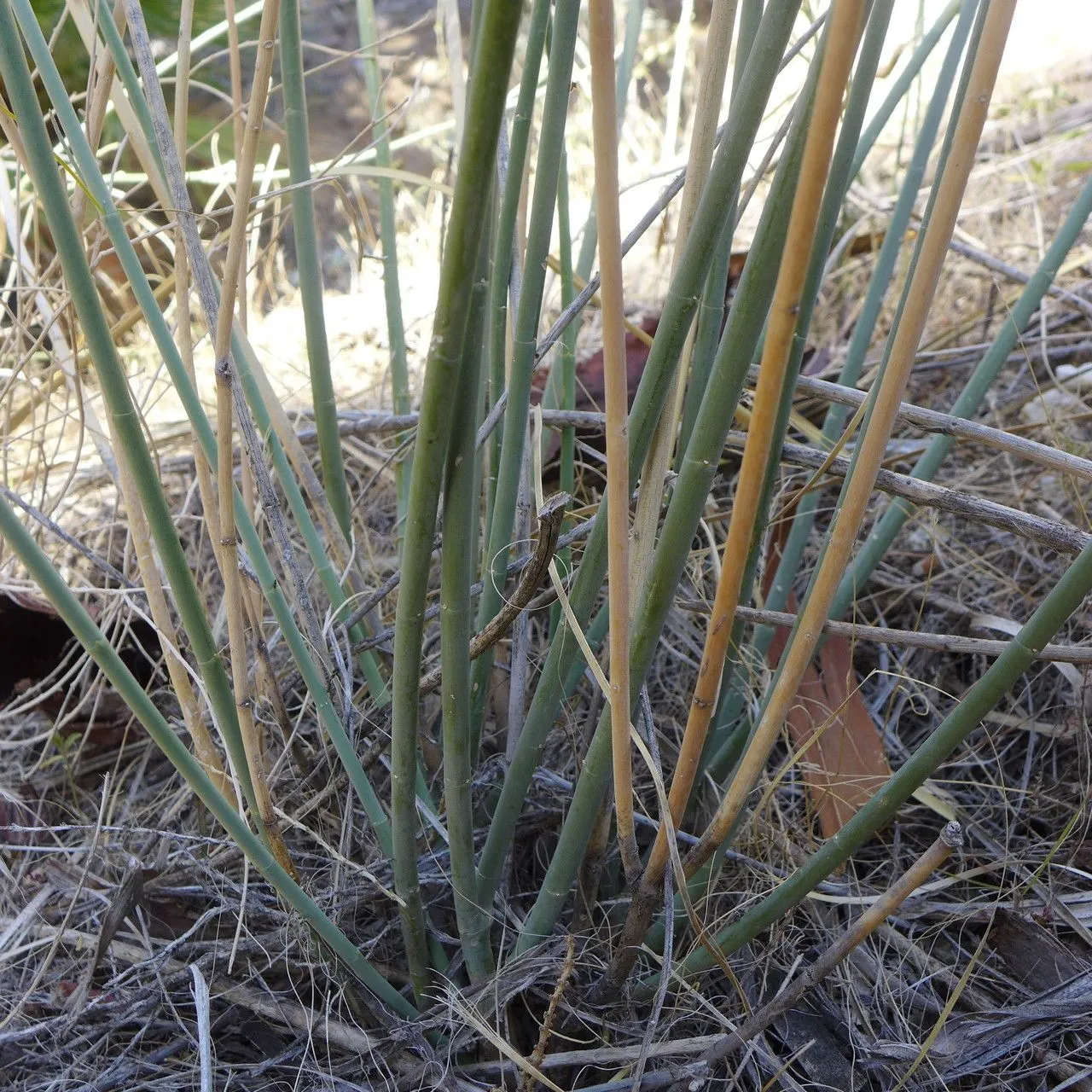
Author: Decne.
Bibliography: A.P.de Candolle, Prodr. 8: 571 (1844)
Year: 1844
Status: accepted
Rank: species
Genus: Asclepias
Vegetable: Unknown
Observations: SW. U.S.A. to NW. Mexico
Rush milkweed, known scientifically as Asclepias subulata, is an intriguing species within the Apocynaceae family. Originally documented by the botanist Decne. and later referenced in A.P. de Candolle’s “Prodromus Systematis Naturalis Regni Vegetabilis” in 1844, this plant is native to the southwestern United States and northwestern regions of Mexico.
The distinct appearance of Rush milkweed sets it apart from its counterparts. It typically exhibits slender, rush-like stems that can grow erect and branch out sparsely. Unlike the more traditional milkweed species which bear broad leaves, Asclepias subulata is often characterized by its narrow, pointed leaves, which contribute to its adaptation to arid environments. Its foliage is minimal, an evolutionary trait likely developed to minimize water loss in the hot, dry climates where it thrives.
Flowering during the warmer months, Rush milkweed produces clusters of small, white to pale yellow flowers. These blooms, while understated in their color, play a crucial role in the ecosystem. Much like other milkweeds, they produce a rich nectar that attracts a variety of pollinators, including bees and butterflies. Monarch butterflies, in particular, are known to rely on Asclepias species as a vital food source during their larvae stage.
The plant’s unique structure not only provides ecological benefits but also makes it a resilient candidate for xeriscaping—landscaping designed specifically for dry environments. Its ability to thrive with minimal water makes it a sustainable option for gardeners and landscapers aiming to create drought-resistant gardens.
Though not as flamboyant as some of its relatives, Rush milkweed’s modest beauty and ecological importance make it a noteworthy subject of interest. Its resilience and adaptability are testament to the diverse and intricate relationships within the plant kingdom, especially in regions where water is scarce.
In summary, Asclepias subulata, or Rush milkweed, is a fascinating plant admired for its unique adaptation to dry climates and its essential role in supporting local pollinators. Whether observed in the wild or cultivated in a garden, it stands as a robust example of nature’s ingenuity and resilience.
Eng: rush milkweed
En: Rush milkweed
Zh: 裸茎乳草
Zh-tw: 裸莖乳草
Taken Oct 15, 2014 by EOL − juniperus_scopulorum (cc-by-nc)
Taken Oct 15, 2014 by EOL − juniperus_scopulorum (cc-by-nc)
Taken Oct 15, 2014 by EOL − juniperus_scopulorum (cc-by-nc)
Taken Jan 1, 1900 by EOL − Stan Shebs (cc-by-sa)
Taken Jan 1, 1900 by EOL − Stan Shebs (cc-by-sa)
Taken Oct 15, 2014 by EOL − juniperus_scopulorum (cc-by-nc)
Taken Oct 15, 2014 by EOL − juniperus_scopulorum (cc-by-nc)
Taken Jan 1, 1900 by EOL − Stan Shebs (cc-by-sa)
Taken Jan 1, 1900 by EOL − Stan Shebs (cc-by-sa)
Taken Jan 1, 1900 by EOL − Stan Shebs (cc-by-sa)
Taken Aug 12, 2020 by Liz Pucket (cc-by-sa)
Taken Jun 25, 2019 by Awad Younes (cc-by-sa)
Taken Apr 16, 2012 by EOL − Keir Morse (cc-by-nc-sa)
Taken Oct 15, 2014 by EOL − juniperus_scopulorum (cc-by-nc)
Taken Oct 15, 2014 by EOL − juniperus_scopulorum (cc-by-nc)
Taken Jan 1, 1900 by EOL − Stan Shebs (cc-by-sa)
Taken Jan 1, 1900 by EOL − Stan Shebs (cc-by-sa)
Taken May 7, 2014 by EOL − icosahedron (cc-by)
© copyright of the Board of Trustees of the Royal Botanic Gardens, Kew.
© copyright of the Board of Trustees of the Royal Botanic Gardens, Kew.
Family: Myrtaceae Author: (F.Muell.) K.D.Hill & L.A.S.Johnson Bibliography: Telopea 6: 402 (1995) Year: 1995 Status:…
Family: Rubiaceae Author: Pierre ex A.Froehner Bibliography: Notizbl. Bot. Gart. Berlin-Dahlem 1: 237 (1897) Year:…
Family: Sapindaceae Author: Koidz. Bibliography: J. Coll. Sci. Imp. Univ. Tokyo 32(1): 38 (1911) Year:…
Family: Asteraceae Author: A.Gray Bibliography: Pacif. Railr. Rep.: 107 (1857) Year: 1857 Status: accepted Rank:…
Family: Fabaceae Author: Medik. Bibliography: Vorles. Churpfälz. Phys.-Ökon. Ges. 2: 398 (1787) Year: 1787 Status:…
Family: Aspleniaceae Author: (Cav.) Alston Bibliography: Bull. Misc. Inform. Kew 1932: 309 (1932) Year: 1932…